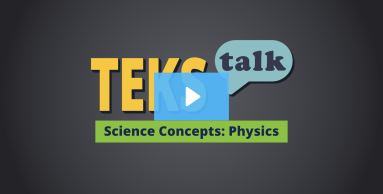- Science
- Grade 9
- Science concepts
PHYS.6.E

Knowledge and Skills Statement
The further explanation is designed to be a resource for educators that helps them better understand the topic their students are learning. Further explanations may be written at a more complex level than would be expected for students at the grade level.
It is important that students are able to not only solve equations related to circuits, but also describe the relationships represented by those equations. Images like the one below represent the relationship between voltage, current, and resistance and may help students understand how changing one variable can impact the others.
The image below may be helpful in describing all the different ways that power, voltage, current, and resistance can be calculated if the other variables are known.
Research
Ivanjek, Lana, Louisa Morris, Thomas Schubatzky, Martin Hopf, Jan-Philipp Burde, Claudia Haagen-Schützenhöfer, Liza Dopatka, Verena Spatz, and Thomas Wilhelm. "Development of a Two-tier Instrument on Simple Electric Circuits." Physical Review Physics Education Research 17, no. 2 (2021): 020123. https://doi.org/10.1103/PhysRevPhysEducRes.17.020123
Summary: Six physics education research groups from Germany and Austria started a large study to evaluate and improve middle-school students’ conceptual understanding of simple electric circuits. Analysis of the data suggests that the concept of voltage is most difficult for students while distinguishing between open and closed circuits is the easiest.
Research
Yerushalmi, Edit, Menashe Puterkovsky, and Esther Bagno. "Knowledge Integration While Interacting with an Online Troubleshooting Activity." Journal of Science Education and Technology 22, no. 4 (2013): 463-474. https://doi.org/10.1007/s10956-012-9406-8
Summary: A troubleshooting activity was carried out by an e-tutor in two steps. First, students diagnosed a mistaken statement and then compared their diagnosis to a teacher’s diagnosis provided by the e-tutor. The mistaken statement involved a widespread tendency to over-generalize Ohm’s law. We studied the discourse between pairs of students working with the e-tutor to examine whether and how the activity attained its objective of engaging students in knowledge integration processes; namely to elicit students’ ideas, add scientifically acceptable or non-acceptable ideas and support them in developing criteria to sort out their ideas.
